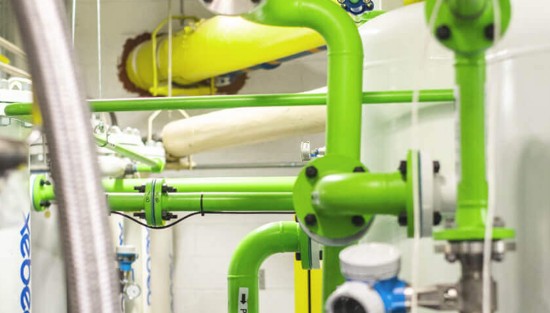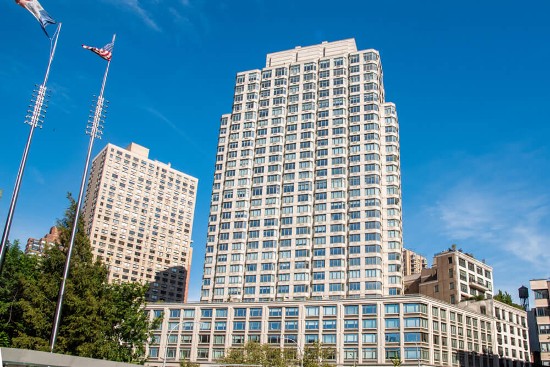In past postings on this site, I have written about how our already-built infrastructure contributes to rising greenhouse gas (GHG) emissions. I have described a number of ways legacy buildings can reduce their contributions to climate change with something as simple as adding a coat of light-reflecting paint. I have noted that replacing windows and doors with more energy-efficient alternatives helps buildings and homes to lower their carbon footprints.
One building in New York City, built in 2004, is going a step further than any of the above suggestions. As reported on March 10, 2023, in the New York Times, the Grand Tier, a 30-storey apartment in Manhattan, has installed a system to capture carbon dioxide (CO2) produced from natural gas used to heat its twin boilers. The boilers provide heat to the building. The CO2 would normally be vented through the building’s chimneys. But now, instead of CO2 being released into the atmosphere, a carbon capture system from CarbonQuest is liquefying the gas.
CarbonQuest states that its technology, seen in part below, can eliminate 100% of a building’s CO2 emissions. You have to love the green pipes.

The captured and liquefied CO2 can then be used by manufacturers of concrete and cement, e-fuels, non-petroleum-based chemicals, and fossil-fuel-free plastics.
The building is located at 1930 Broadway in Manhattan, Built in 2004, its carbon capture technology was installed in 2021. So far the system is reducing CO2 emissions by 60% (not quite the 100% CarbonQuest claims). And a customer has been found for the captured CO2. It is a large concrete paver manufacturer that once a week pumps the liquefied gas into a tanker truck which then delivers it to its facility where the CO2 gets converted into a powder and added to cement, sand and aggregate. The chemical reaction of CO2 when mixed with cement produces the mineral calcium carbonate. This is the same mineralization process we see in the natural world that produces limestone. And just like in limestone, the weathering or breaking up of the material releases no CO2 into the atmosphere. In other words, the sequestration is permanent.
CO2 capture and utilization is a good demonstration of circular economic principles. And curing concrete with CO2 is proving to be a way for the cement industry, which is responsible for 8% of global GHG emissions, to become a little bit greener.
One of the reasons the building on Broadway installed its carbon capture system is to comply with Local Law 97, a new climate law in New York City requiring large buildings to cut GHG emissions by 40% by 2030, and 80% by 2050. Buildings that are non-compliant face escalating fines.
What holds other buildings with natural gas or oil-fired boilers from implementing a similar system? Prior to this, the only places where carbon capture systems were being readily deployed is in coal and natural gas-fired thermal power plants. These were big installations. To make it work in a building, CarbonQuest created a smaller form factor. At 1930 Broadway, the technology takes up about three parking spaces underground.
The owner of 1930 Broadway also has 30 other large buildings in Manhattan. The company has been finding energy savings such as replacing older lighting fixtures with LEDs, upgrading its fans with more energy-efficient motors, and improving insulation.
In the New York Times article, it notes that even with these improvements the building would have faced fines of $100,000 in 2024 rising to $400,000 in 2030 because of the natural gas-fired boilers.
It explored replacing the heating of the boilers using electric heat pumps but there were concerns about renovation costs needed and whether the heating source would be reliable enough on winter’s coldest days. Heat pumps work well when outside temperatures stay above -15 Celsius (5 Fahrenheit). Below that threshold, however, although they continue to operate their heating efficiency declines.
With two winters under its belt, the building owner is now looking at installing the CarbonQuest system in five more of its properties and calculates that these installations will pay for themselves in six years.
The drafters of Local Law 97 never contemplated carbon capture as a solution for meeting the city’s carbon emission reduction targets. As a result, the law makes no mention of this technology option. New York City Department of Building officials have stated that before changing the law they want reassurances that the technology will verifiably perform as claimed.
Does a carbon capture technology solution like this make sense elsewhere? In achieving a low-carbon future, building heating is seen as an area where changes need to be made. Electrification is one answer. Energy conservation through improved thermal efficiencies is another.
Considering the already built natural gas-heating infrastructure in so many Northern Hemisphere cities like New York, Chicago, Toronto, and others, is the CarbonQuest solution realizable?
Will there be enough customers for the captured CO2? And if not, will there be enough underground capacity to sequester the CO2 that cannot be turned into useful zero-emitting products?
The New York Times article features a quote from John Mandyck, CEO of the Urban Green Council. He states, “We’re still in the early stages of what’s going to be a massive market transformation. The changes required are so big that I don’t think we can rule out any approach just yet.”
















